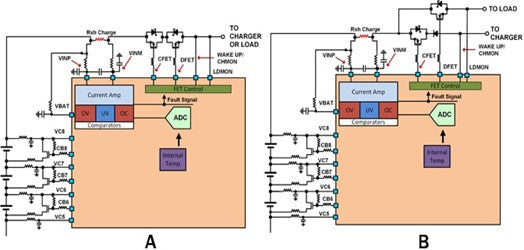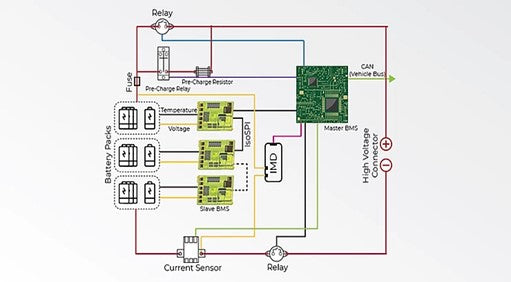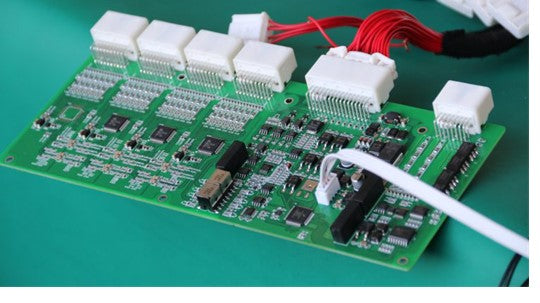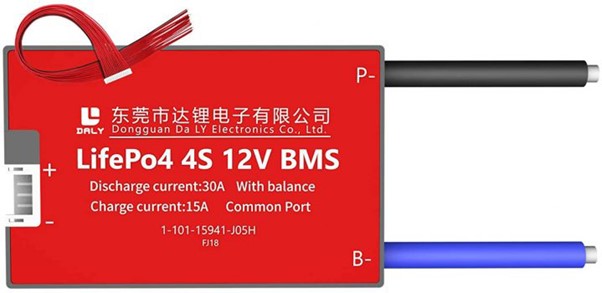
Battery Management System; an Effective Way to Protect your Batteries.
Lithium-ion batteries have proven to be relatively more advantageous than other battery cells. There are, however, conditions that can cause damage to the battery. One of the essential technologies developed to solve this problem is the BMS. This article will discuss the meaning of BMS, how it works, its components, the importance and benefits, LiFePo4 BMS and how it works, and the bottom balancing of a battery pack.
What is a battery management system?
A battery management system is a technology dedicated to overseeing a battery pack, an assembly of electrically organized battery cells. It keeps the battery cells within the battery pack healthy and ensures they perform optimally. Some of the significant duties of the BMS include:
1. Protecting the battery
2. Continuous optimization of the battery's performance
3. Monitoring the battery's internal: the voltage, current, and temperature
4. Reporting operational status to external devices
Every battery has a specific voltage, current, and temperature range in which it can safely operate. Your battery pack may get permanently damaged if its components get degraded.
Lithium-ion rechargeable batteries have the highest energy density. They are the most suitable choice for battery packs for many products, ranging from the not-so-large ones like a laptop to the larger ones like electric vehicles.
Components of A Battery Management System
Although there are many designed features that a BMS provides, we have two essential elements, which are:
1. Battery pack capacity management: a battery pack may be useless if attention is not given to this maintenance.
2. Battery pack protection management: there's part of electrical protection which does not allow the battery to be damaged by usage outside its SOA(safe operating area). There's also thermal protection, which involves temperature control to bring or maintain the pack into its safe operating space.
Components of the battery management system
A battery management system consists of many functional blocks. The two main functional blocks are:
1. Cut-off FETs: a FET functional block is responsible for connecting the battery pack between the load and the charger. FET drivers connect to the high-side or low-side of a battery pack. The two different types of FET connections are illustrated in the picture below.
2. Fuel gauge monitor: this functional block keeps track of the charge entering and exiting the battery pack. A clear understanding of the behavior of loads in terms of current consumption and time determines the best type of fuel gauge design.Other battery management system building blocks include memory, a real-time clock, a daisy chain, and battery authentication.

Types of BMS
Different types of BMSs with different topologies are available in the market. It is vital to select the correct type of battery pack. Fundamentally, BMS are classified into centralized and decentralized.
Centralized battery management system: A centralized BMS monitors, controls, and balances all the cells. It is a one central pack controller. In simpler terms, it has the entire cell monitoring and intelligence circuitry on a single assembly.
The board consists of multiple analogs to digital converter(ADC) channels. On each cell, the voltage grows with the number of cells. There's also the intelligence circuitry responsible for internal communication with the cell monitoring circuitry. It is essential for determining the battery's state of health and state of charge and also for external communication.
Decentralized battery management system: A decentralized BMS does not have its entire cell monitoring circuitry on a single assembly.

This works in two ways:
- The BMS has multiple identical modules. Each of these modules has its bundle of wires going into one of the batteries in the pack. One of the modules serves as the primary module, i.e., It manages the entire pack.
- The BMS consists of the master and the slave BMS unit. The slave unit monitors and controls a group of battery cells within the module. The master unit controls external communication and the power distribution unit.
Benefits of using a Battery Management System
As cells work together to release energy, maintaining stability throughout the whole pack is essential. Not only is BMS important in protecting the battery while in operation, but it also indicates the health of the battery. The following are the benefits of using a battery management system:
LiFePo4 BMS and how it works
The components of lithium-iron-phosphate batteries are what make their performance superior. LiFePo4 battery is a form of portable power generator. A mobile power generator/station is a lunch-box-sized power bank with a USB charging port(s), DC carport, and an AC outlet.
A portable solar generator captures the sun's energy and stores the energy for later use through solar panels.
The portable power station is very desirable because it is mobile and can be carried anywhere. Also, it's very safe and rechargeable by various means like solar panels. Acevolts have different solar generators uniquely built, especially for camping.
A BMS is a vital part of any lithium-ion battery, and it is crucial to use the correct BMS in your battery pack. Acevolt Campower portable power station provides the best LiFePo4 battery cells. The lithium iron phosphate battery packs a lot of power in a small package.
As solid and tolerant as LiFePo4 batteries are, overvoltage over a prolonged period during charging can cause permanently degraded performance due to the plating of metallic lithium on the battery's anode.
A LiFePo4 battery management system controls your battery pack's charge and discharge process. If anything goes wrong during charge or discharge, the BMS immediately adjusts the parameters and cuts off the power flow to and from the battery. The ability of the LiFePo4 BMS to do this is called balancing.
Balancing is an integral part of lithium-iron-phosphate battery cells. It simply matches cells by voltage and capacity and maintains voltage balance at all state of charge levels. For the battery to maintain optimal performance, cell balancing must happen throughout the battery's life. The entire battery shuts down in lithium batteries once the lowest voltage cell hits the discharge voltage cut off.
If the cells are not balanced when charging, charging will be interrupted once the cell with the highest voltage reaches the cut-off voltage, i.e., all battery cells will not be fully charged. This results in some cells not getting fully charged, causing the battery not to reach a 100% state of charge. Continuous charge and discharge of an imbalanced battery lower the battery capacity over time.
There are two types of cell balancing, top and bottom. Here, we will focus mainly on the bottom balancing. Battery pack bottom balancing, in simple terms, means cells are balanced to match at their exact lowest and safest voltage. In bottom balancing, all cells reach the minimum state of charge simultaneously.
A BMS helps prevent your LiFePo4 battery from:
In addition, a BMS optimizes your battery's overall performance. This way, you can maximize the function of your lithium-iron-phosphate battery pack as regards lifespan and general performance.
There are different types of LiFePo4 BMS, depending on the size of your battery. Some are the circuit board with all of their electronic components exposed.

While some come in a case that protects the battery management system from external conditions. They can be dustproof, fire-resistant, or waterproof.
























Leave a comment